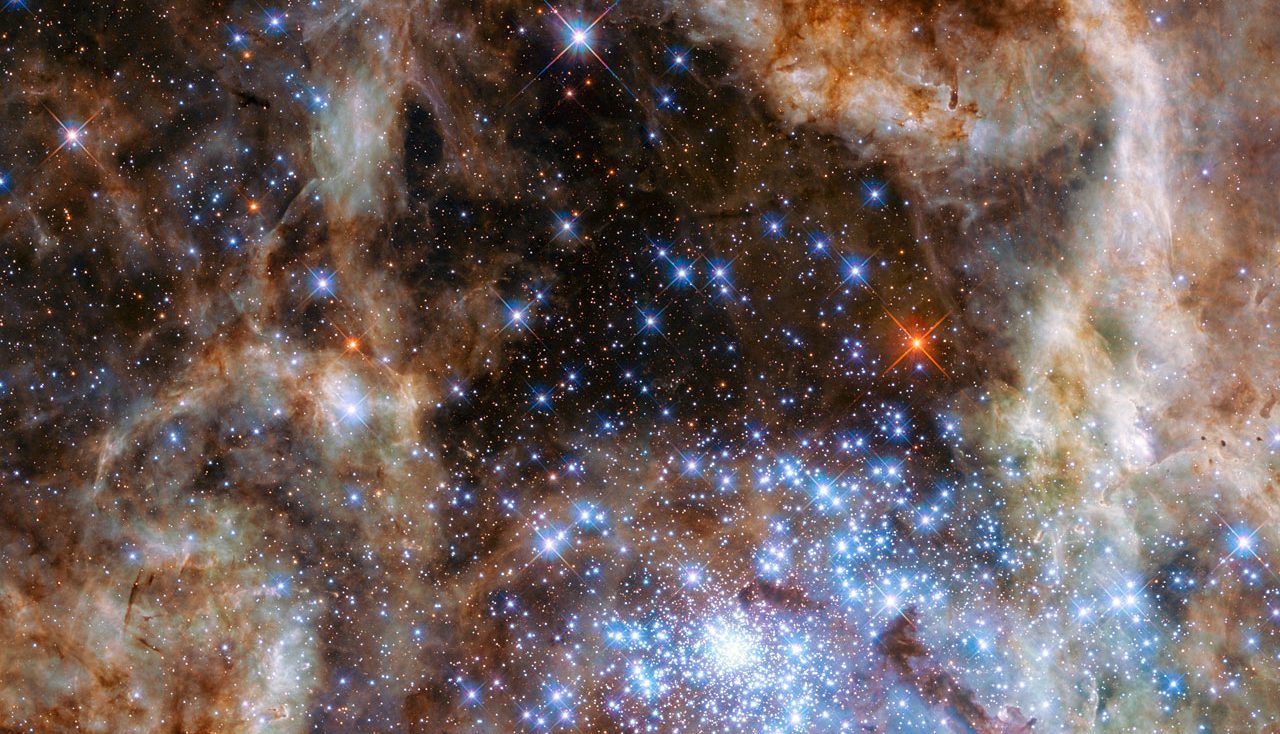Monster stars revealed by Hubble Space Telescope
 A new study was able to reveal nine very massive stars in the young star cluster R136, all more than 100 times more massive as the Sun!
A new study was able to reveal nine very massive stars in the young star cluster R136, all more than 100 times more massive as the Sun! An international team of scientists using the NASA/ESA Hubble Space Telescope (HST) has combined images taken with the Wide Field Camera 3 (WFC3) with the unprecedented ultraviolet spatial resolution of the Space Telescope Imaging Spectrograph (STIS) to successfully dissect the young star cluster R136 in the ultraviolet for the first time.
R136 is only a few light-years across and is located in the Tarantula Nebula within the Large Magellanic Cloud, about 170 000 light-years away. The young cluster hosts many extremely massive, hot and luminous stars whose energy is mostly radiated in the ultraviolet.
As well as finding dozens of stars exceeding 50 solar masses, this new study was able to reveal a total number of nine very massive stars in the cluster, all more than 100 times more massive as the Sun. The record holder R136a1 keeps its place as the most massive star known in the Universe, at over 250 solar masses. The detected stars are not only extremely massive, but also extremely bright. Together these nine stars outshine the Sun by a factor of 30 million.
- More information: Scientific paper & HST Press Release
- Image Caption: The central region of the Tarantula Nebula in the Large Magellanic Cloud. The young and dense star cluster R136 can be seen at the lower right of the image, and contains hundreds of young blue stars, among them the most massive star detected in the Universe.
- Image Credit: NASA, ESA, P Crowther (University of Sheffield)


